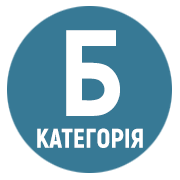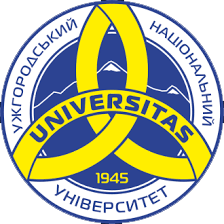PSYCHOLOGICAL AND PEDAGOGICAL ASPECTS OF PREVENTING INTERNET DEPENDENCY BEHAVIOR IN MEDICAL STUDENTS
DOI:
https://doi.org/10.32782/psy-visnyk/2024.2.20Keywords:
Internet addiction, prevention, support for internet-dependent behavior, medical students, psychologicalpedagogical intervention system.Abstract
This article is dedicated to the analysis and discussion of primary, secondary, and tertiary prevention strategies for internet addiction among medical students, following the classification of the World Health Organization. The author thoroughly explores the methods and approaches for implementing comprehensive preventive programs that encompass educational, social, psychological, administrative, and legislative aspects. The main tasks of preventive activities include fostering a healthy lifestyle, developing social support, informing about the risks of internet dependency, stimulating the change of maladaptive behaviors to adaptive ones, and fostering motivation to reduce levels of internet activity. The principles for building effective preventive programs, including systematization, strategic integrity, multi-aspect approach, and continuity are revealed. Special attention is given to the importance of interaction between students, educators, parents, university administration, and community organizations to create a comprehensive and effective approach to the prevention of internet dependency. The article emphasizes the necessity of integrating preventive initiatives into the general educational and upbringing process, as well as the importance of regular evaluation of program effectiveness. The article makes a significant contribution to the understanding of comprehensive prevention of internet dependency and offers specific recommendations for its implementation in educational institutions. Conclusions are made that the prevention of internet dependency requires a comprehensive and multi-aspect approach, involving a wide range of stakeholders and adaptation to the specific needs and conditions of the educational environment. Using such an approach will not only reduce the level of internet dependency among students but also promote the formation of healthy habits and improve overall psychological and social well-being. Further consideration of this problem is seen in the development of educational programs and methodologies to ensure effective training and help minimize manifestations of addictive behavior, especially among medical students.
References
Georgiadis J.R., Kringelbach M.L. The human sexual response cycle: Brain imaging evidence linking sex to other pleasures. Prog. Neurobiol. 2012, № 98. С. 49–81.
Yuan K., Qin W., Wang G., Zeng F., Zhao L., Yang X., Liu P., Liu J., Sun J., von Deneen K.M., Gong Q., Liu Y., Tian J. Microstructure Abnormalities in Adolescents with Internet Addiction Disorder. PLoS ONE. 2011.
Steele V.R., Staley C., Fong T., Prause N. Sexual desire, not hypersexuality, is related to neurophysiological responses elicited by sexual images. Socioaffective Neurosci. Psychol. 2013. № 3. С. 207–270.
Lin X., Dong G., Wang Q., Du X. Abnormal gray matter and white matter volume in “Internet gaming addicts” Addict. Behav. 2015. № 40. С. 137–143.
Han D.H., Lyoo I.K., Renshaw P.F. Differential regional gray matter volumes in patients with on-line game addiction and professional gamers. J. Psychiatr. Res. 2012. № 46. С. 507–515.
Hilton D.L., Watts C. Pornography addiction: A neuroscience perspective. Surg. Neurol. Int. 2011. № 2. С. 19.
Lopez-Fernandez O., Honrubia-Serrano M.L., Gibson W., Griffiths M.D. Problematic Internet use in British adolescents: An exploration of the addictive symptomatology. Comput. Hum. Behav. 2014. № 35. С. 224–233.
Ruiz-Díaz M., Hernández-González M., Guevara M.A., Amezcua C., Ågmo A. Prefrontal EEG correlation during tower of hanoi and WCST performance: Effect of emotional visual stimuli. J. Sex. Med. 2012. № 9. С. 2631–2640.
Jelenchick L.A., Eickhoff J., Christakis D.A., Brown R.L., Zhang C., Benson M., Moreno M.A. The Problematic and Risky Internet Use Screening Scale (PRIUSS) for Adolescents and Young Adults: Scale Development and Refinement. Comput. Hum. Behav. 2014. № 35. С. 171–178.
Cicchetti D. Child maltreatment. Annu. Rev. Clin. Psychol. 2005. № 1. С. 409–438.
Young, K. S. Caught in the net: How to recognize the signs of Internet addiction and a winning strategy for recovery. John
Wiley & Sons. 1998.
Chou, C., Condron, L., & Belland, J. C. A review of the research on Internet addiction. Educational Psychology Review.
№ 17(4). С. 363–388.
Chang, M. K., Law, S. P., Nguyen, T. H. Factors influencing the addictive use of social networking sites: A case study in
Vietnam. Cyberpsychology, Behavior, and Social Networking. 2013. № 16(6). С. 456-463.
Ironson G.H, Freund B., Strauss J.L., Williams J. Comparison of two treatments for traumatic stress: a community-based
study of EMDR and prolonged exposure. J. Clin. Psychol. 2002. № 58. С. 113–128.






